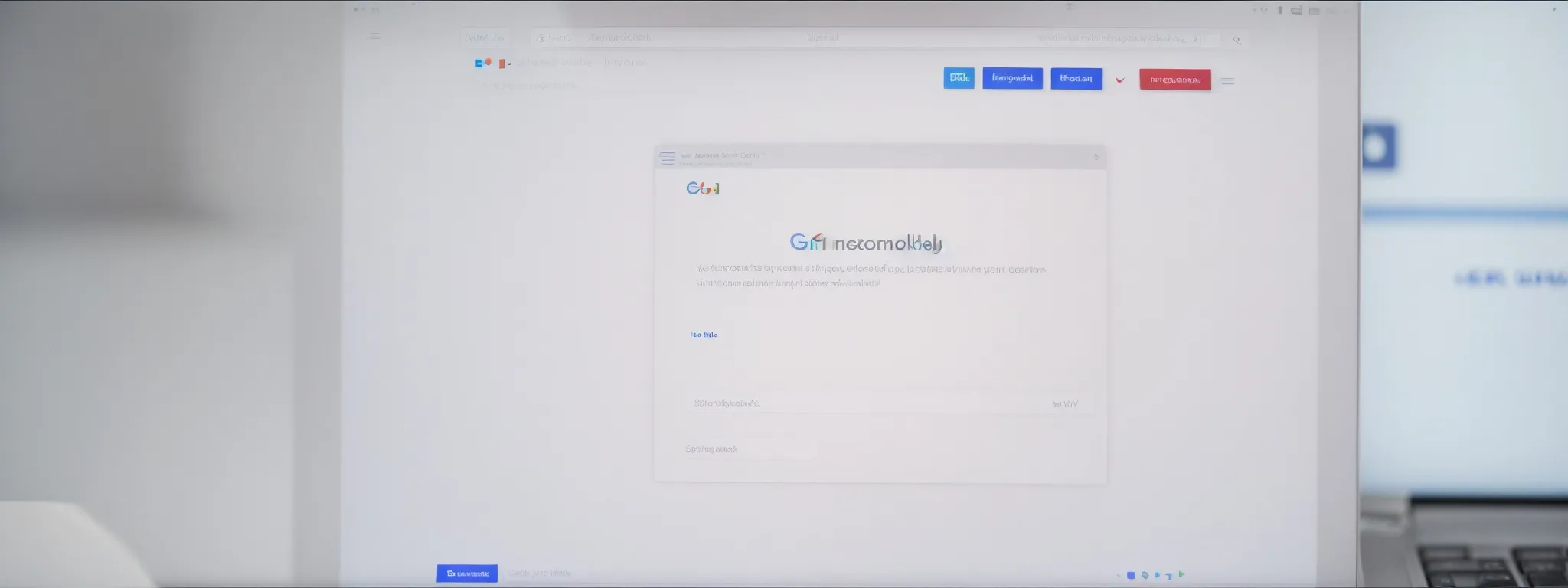Google Shopping Ads in Gmail: This Week’s Digital Marketing News
Exploring Google Shopping Ads Integration in Gmail – Latest Updates From the Digital Marketing World The digital marketing landscape continues to evolve, presenting savvy marketers with new […]
Exploring Google Shopping Ads Integration in Gmail – Latest Updates From the Digital Marketing World
The digital marketing landscape continues to evolve, presenting savvy marketers with new opportunities to connect directly with their audience.
As Google integrates shopping ads within Gmail, retailers and merchants stand at the cusp of tapping into Gmail users’ daily routines, combining the convenience of email with the potency of targeted advertising.
This integration allows for a seamless shopping experience, directly from the inbox, where discovery meets decision-making.
Brands ready to capitalize on this shift are poised to redefine the standards of customer engagement and conversion.
Keep reading to learn how to integrate Google Shopping Ads into your Gmail campaigns effectively and discover the potential impact on your digital marketing strategy.
Key Takeaways
- Google Shopping Ads in Gmail Offer a Personalized and Convenient Shopping Experience Directly Within the User’s Email Platform
- Advanced Targeting and AI-driven Insights Are Revolutionizing the Effectiveness and Relevance of Gmail Shopping Ads
- Seamless Design Across Devices and Well-Placed CTAs Are Essential for Engaging Gmail Users and Driving Conversions
- Compliance With Data Privacy Laws and Transparent Ad Practices Is Critical in Fostering Trust and Optimizing Gmail Ad Campaigns
- Integrating Gmail Shopping Ads Into a Broader Digital Marketing Strategy Ensures a Cohesive and Effective Multichannel Presence
Unveiling Gmail’s New Google Shopping Ads Feature

The marketing landscape is perpetually evolving, with innovations often heralding new opportunities for engagement.
Google’s integration of Shopping Ads in Gmail exemplifies this progression, presenting a dynamic avenue for marketers and retailers to showcase products directly within the email platform.
This strategic placement taps into a daily routine for countless users, offering unrivaled access to potential customers.
It contrasts with traditional advertising methods, as it fuses the personal nature of email communication with the convenience of shoppable ads.
As this feature redefines the parameters of email marketing and digital shopping, understanding its impact on consumer behavior and marketer strategies becomes paramount for businesses aiming to leverage the full potential of their digital marketing campaigns.
Introduction to Google Shopping Ads in Gmail
The digital arena is abuzz with the integration of Google Shopping Ads within Gmail, a move set to transform email inboxes into a nexus of commerce and advertisement. Google’s innovative approach allows advertisers to position their shopping ads strategically amongst email content, capitalizing on a platform where user engagement is already high.
This integration brings a novel dimension to both email marketing and the shopping experience, enabling a seamless transition from the discovery of products to the point of purchase without leaving Gmail. Marketers are now empowered to forge a direct connection with their audience, leveraging Gmail as a gateway to amplify reach and drive conversions.
The Benefits for Marketers and Consumers
For marketers, the inclusion of Google Shopping Ads in Gmail heralds a significant boon, enabling them to engage with customers in a more intimate and targeted environment. This integration aids in bolstering the visibility of products at a moment when potential buyers are perusing their inbox, potentially increasing click-through rates (CTRs) and driving higher conversion rates.
Consumers stand to benefit from the convenience and personalization that Google Shopping Ads in Gmail offer. Displaying relevant products within the email environment reduces the friction traditionally associated with online shopping, allowing users to explore and purchase items with unprecedented ease, further blurring the lines between shopping and daily digital routines.
How Gmail Integration Differs From Traditional Ads
The integration of Google Shopping Ads within Gmail epitomizes a significant departure from traditional ad placements. Where conventional ads might vie for attention amidst a busy web page or social media feed, Gmail’s shopping ads are nestled comfortably within a user’s personal email space, fostering a unique level of interaction and engagement that classic display or search ads rarely achieve.
Moreover, this tailored strategy enables advertisers to bypass the noise of the crowded marketing landscape, by reaching users where they are most receptive. Traditional ads require users to navigate away from their current activity, however, Gmail’s shopping ads streamline the customer journey, enabling an immediate and direct pathway from advertisement to checkout.
Setting Up Your Shopping Ads on Gmail Step by Step

In a digital era where efficiency and convenience reign supreme, the latest update to Google Ads presents a compelling opportunity for savvy marketers to streamline the customer acquisition process.
With Google Shopping Ads now integrated within Gmail, businesses can tap into a focused and engaged audience, transforming the email inbox into a vibrant marketplace.
This fresh initiative calls for a strategic approach, as marketers must navigate through the initial setup within the Google Ads dashboard, meticulously select which products to feature for maximum appeal, and then craft compelling ad content.
Done correctly, these steps will resonate with Gmail users, potentially boosting performance metrics such as click-through rates and conversions.
Let’s delve into each of these pivotal stages to ensure that digital marketing campaigns harness the full power of this innovation.
Accessing the Gmail Ads Setup in Google Ads
Navigating to the ad setup for Google Shopping Ads within Gmail begins with accessing the Google Ads dashboard. Marketers must sign into their Google Ads account and embark on creating a new campaign, amidst which, the option for Gmail advertising will surface, providing a seamless process for initiating these targeted ad placements.
After selecting the desired campaign type, digital marketing professionals can swiftly proceed to the campaign settings, where they tailor parameters to align with their specific goals and target audience. This crucial step lays the foundation for a successful Shopping Ads campaign within Gmail, ensuring the ads reach attentive and interested users right within their inboxes.
Selecting Products for Gmail Shopping Campaigns
In the realm of Google Shopping Ads within Gmail, selecting the optimal products is a pivotal task for marketers striving to capture the attention of potential buyers. It requires a nuanced understanding of the audience’s preferences and behaviors, coupled with data-driven insights to determine which items would resonate most strongly with Gmail users and drive impactful results.
As part of the digital marketing strategy, a marketer’s ability to tailor product selections for Gmail Shopping Campaigns is fundamental in crafting a personalized shopping experience that aligns with the user’s intent and purchase history. This strategic focus not only heightens the potential for conversions but also reinforces the relevancy and efficacy of the campaigns through curated product offerings.
Crafting Compelling Ad Content for Gmail Users
Once an array of products has been meticulously curated, the task shifts to shaping the narrative for each item within the ad content, ensuring it resonates with Gmail’s vast audience. Crafting ad content that captivates Gmail users calls for a harmonious blend of visual appeal and compelling narrative, effectively conveying a product’s value proposition in a succinct and engaging manner.
- Commencing with a strong headline that captures attention and sparks interest
- Employing high-quality visuals that portray products in the best light
- Incorporating clear, concise descriptions that highlight key benefits and features
- Implementing strategic calls-to-action that encourage users to explore further or make a purchase
The potency of ad content within Gmail shopping campaigns hinges on its ability to transform mere interest into decisive action: prompting users to navigate seamlessly from their inboxes to the checkout page. Marketers must finesse their messaging to elicit a swift and positive response, leveraging the right mix of informativeness and persuasion to drive user engagement and sales.
Tailoring Shopping Ads for the Gmail Environment

In the swiftly changing realm of digital marketing, the recent integration of Google Shopping Ads into Gmail presents a crossroads of innovation and targeting acumen.
Adjusting one’s marketing strategy to this novel environment demands a comprehensive understanding of Gmail user behavior, paired with a meticulous approach to design geared specifically towards the unique nuances of email platforms.
As businesses explore this groundbreaking feature, grasping the nuances of user interactions becomes instrumental in optimizing ad visibility and performance.
This includes a fine-tuning of calls-to-action (CTAs) placement, ensuring messages not only resonate with the audience but also invite action with strategic positioning.
It is this tailored approach that can yield a dramatic enhancement in engagement and conversion rates, paving the way for more personalized and successful Gmail Shopping Ad campaigns.
Understanding Gmail User Behavior for Better Targeting
To efficiently implement Google Shopping Ads in Gmail, marketers need to keenly parse Gmail user behavior. By analyzing patterns such as the times when users most frequently check their inboxes, which types of email they engage with, and how they interact with embedded content, advertisers gain valuable insights for timing and framing their campaigns more effectively.
Profiling users provides a strategic advantage in personalizing Shopping Ads to match the unique preferences and demands of Gmail audiences. Advertisers who master this approach excel by placing relevant offerings in front of the right eyes, moving away from a one-size-fits-all mentality to create more targeted, high-converting ad experiences within the email platform.
Design Considerations for Ads Within Email Platforms
When designing Shopping Ads for email platforms like Gmail, creators must prioritize clarity and conciseness. The email environment is one where users scan content rapidly, making it critical for ads to convey the desired message through a balanced composition of visuals and text, quickly capturing the viewer’s interest and guiding them towards action.
It’s essential to optimize ad designs for diverse device types considering the array of devices consumers use to check their emails. Responsiveness in design enables seamless display across desktops, tablets, and smartphones, ensuring a consistent user experience and maintaining the effectiveness of the Shopping Ad regardless of the device used by the recipient:
| Platform | Design Needs | User Experience Goal |
|---|---|---|
| Desktop | Higher resolution, larger visuals, and expanded text | Engage users with detail-rich content |
| Tablet | Touch-friendly interface, balanced text, and visuals | Facilitate interaction through a tactile approach |
| Smartphone | Concise messaging, scalable images, thumb-friendly buttons | Ensure convenience and readability on-the-go |
Best Practices for CTA Placement in Gmail Ads
Proper placement of CTAs within Gmail ads is a delicate art that determines user response efficacy. Highlighting the importance of a clear and compelling call-to-action, these directives should be positioned prominently at the end of the ad to signal the transition from awareness to action, ensuring the user can proceed with ease after their interest has piqued.
Additionally, CTAs in Gmail ads must account for the user’s context and device; they should be optimized for quick visibility and interaction. In the context of mobile users, for instance, the CTA should facilitate effortless tapping, while on desktop, it could afford to be more descriptive, guiding users who are navigating through a cursor and a potentially larger screen.
Analyzing Gmail Shopping Ads Performance Metrics

In the vibrant world of digital marketing, where strategy intersects with analytics, evaluating the success of Google Shopping Ads in Gmail has become indispensable.
Deciphering the narrative that performance metrics weave is paramount, as it illuminates the effectiveness of ad placements and the resonation of products within the inboxes of a global audience.
Digital marketers deftly turning to sophisticated tools for tracking sales and engagement are leading the charge in optimizing their Gmail ad strategies.
Sage analysis of such data empowers businesses to refine their approaches, ensuring they not only align with but also capitalize on user interactions and behaviors.
Key Performance Indicators for Gmail Shopping Ads
Scrutiny of Gmail Shopping Ads hinges on identifying and monitoring key performance indicators (KPIs) that illuminate the trajectory of an ad campaign’s success. Notably, click-through rates (CTRs) and conversion rates serve as the lighthouse guiding marketers through the fog of campaign performance, indicating user engagement and the effectiveness of the overall ad strategy in driving desirable actions.
Marketers further distill the essence of campaign effectiveness by examining metrics such as cost per conversion and return on ad spend (ROAS). These figures encapsulate the financial prudence of Gmail Shopping Ads, revealing whether the investment in a seemingly prime placement within Gmail inboxes yields a lucrative return, and consequently driving decisions on future ad investments within the platform.
Tools for Tracking Sales and Engagement in Gmail
To effectively measure the success of Google Shopping Ads within Gmail, marketers can leverage tools like the SearchAtlas SEO software, which offers advanced analytics for monitoring key performance metrics. This platform provides real-time data that helps professionals assess the impact of their ad campaigns, measuring vital aspects such as user engagement and conversion rates to optimize their marketing strategies.
Additionally, tracking tools integrated into the Google Ads dashboard are instrumental in evaluating the Gmail ads’ performance. These tools offer insights into customer behavior, tracking clicks and conversions, and helping marketers identify areas where the campaign excels or requires adjustment to better meet the goals of the digital marketing campaign.
Adjusting Strategies Based on Gmail Ad Analytics
Armed with data from Gmail ad analytics, marketing professionals can make informed decisions to fine-tune their promotional strategies. This iterative process entails revising targeting criteria or ad design elements based on user interactions and feedback, enabling marketers to constantly enhance the relevance and appeal of their Shopping Ads in Gmail inboxes.
Significant shifts in performance metrics prompt a strategic realignment of Gmail Shopping Ads, guiding marketers to adjust bid strategies or refocus their ad spend. By embracing the insights garnered from analytics, digital marketers can ensure their campaigns are optimized, yielding maximum ROI and maintaining a competitive edge in the dynamic sphere of digital marketing.
Leveraging AI to Optimize Gmail Shopping Experiences

As digital marketing solutions become increasingly sophisticated, the role of artificial intelligence (AI) in streamlining and enhancing online shopping experiences has become undeniable.
Google’s forward-thinking initiative to integrate Shopping Ads into Gmail is a testament to this trend, with AI at the helm of driving efficiency and increasingly targeted engagement.
By employing machine learning algorithms, Google is curating personalized ad content, optimizing ad placement, and offering AI-driven insights that are refining Gmail shopping campaigns.
These advancements signal an era where technology not only augments marketing strategies but tailors them to the evolving needs and behaviors of consumers in the digital space.
The Role of AI in Curating Personalized Ad Content
Artificial intelligence has become an indispensable ally in shaping the future of personalized digital marketing, and its influence is notably evident in the arena of Gmail’s Google Shopping Ads. By analyzing user data and behavior, AI tailors ad content, ensuring that each recipient encounters items aligned with their past preferences and predicted interests, crafting a shopping experience that feels bespoke and intuitive.
The intelligent algorithms operate behind the scenes to refine the targeting of ad campaigns, increasing the relevance of the displayed products, and enhancing user engagement. In an environment where attention is fleeting, AI’s role in curating content that resonates on an individual level is crucial for advertisers seeking to elevate the effectiveness and responsiveness of their marketing efforts within Gmail.
Using Machine Learning to Improve Ad Placement
Machine learning algorithms are revolutionizing ad placement within Gmail, promoting a significant shift from broad targeting to individualized user engagement. By processing vast amounts of user data, these intelligent systems discern optimal ad positioning, thereby increasing the probability of user interaction and enhancing the overall efficacy of Google Shopping Ads in the Gmail environment.
| Aspect | Benefit | Result |
|---|---|---|
| Ad Positioning | Heightened User Interaction | Increased Ad Efficacy |
| Data Processing | Target Precision | Personalized Experience |
As digital marketers harness the power of machine learning, the placement of Google Shopping Ads is perfected in real-time, tailored to the granular preferences of each Gmail user: Publishers no longer guess where ads might perform best, but rely on data-informed predictions that ensure maximum visibility and engagement, driving a more individualized shopping journey within the email platform.
AI-driven Insights for Refining Gmail Shopping Campaigns
AI-driven insights are elevating the precision of Gmail Shopping Campaigns, allowing digital marketers to dissect and understand the nuances of consumer behavior within the email environment. Through AI, patterns emerge that inform the timing, messaging, and design of shopping ads, ensuring each campaign is fine-tuned to the preferences and habits of specific user segments.
Employing advanced analytics powered by AI, Gmail Shopping Campaigns become more than just advertisements; they transform into well-orchestrated digital experiences. These insights lead to the meticulous optimization of every campaign aspect, from audience targeting to creative execution, empowering marketers to deliver compelling ads that resonate deeply and drive meaningful engagement.
Shopping Ads and GDPR Compliance in Gmail

As digital marketers capitalize on the innovative merging of Google Shopping Ads with Gmail, they must also navigate the complexities of stringent data privacy laws such as the General Data Protection Regulation (GDPR).
The very nature of integrating advertising within an email platform demands a meticulous approach to maintain user privacy and adhere to legal standards.
This key intersection of marketing innovation and compliance offers an opportunity for brands to foster consumer confidence by ensuring consent-driven Gmail Shopping Campaigns and advocating for transparent advertising practices that respect user preferences and data protection laws.
Navigating Data Privacy Regulations With Gmail Ads
In the realm of Gmail’s integration with Google Shopping Ads, adhering to data privacy regulations is a critical aspect. Marketers must ensure their advertising strategies comply with GDPR guidelines, which dictates the management and protection of consumer data. Crafting Gmail Ads campaigns requires a deft balance between personalization and privacy, demanding a thorough understanding of consumer consent mechanisms and data usage policies.
- Understand the nuances of GDPR and its implications on email marketing.
- Incorporate clear opt-in features for Gmail users to control their data preferences.
- Train marketing teams on compliance measures and best practices for data protection.
Such conscientious practices in the handling of user data not only foster trust but also enhance the credibility of brands utilizing Google Shopping Ads within the Gmail ecosystem. Regulation compliance stands as a benchmark for responsible digital marketing, and companies achieving this alignment affirm their commitment to ethical advertising standards while engaging with customers through Gmail.
Ensuring Consumer Consent in Gmail Shopping Campaigns
With the deployment of Google Shopping Ads in Gmail, obtaining and Safeguarding Consumer Consent is a cornerstone of maintaining ethical marketing practices. Marketers are tasked with the clear communication of privacy terms, ensuring users are informed and their consent to receive such ads is explicitly granted, aligning campaigns with the principles of transparency and respect for personal data.
Effective Gmail Shopping Campaigns adopt a consent-centric approach, where user preference settings are both accessible and straightforward, allowing individuals to navigate their participation with ease. This opt-in model places the power in the hands of the consumer, creating a foundation of trust and willingness to engage with the advertisements presented within their email experience.
Building Trust Through Transparent Ad Practices
In the digital milieu where consumer skepticism can be high, the adoption of transparent ad practices is a lynchpin for building trust. By proactively detailing how user data will be utilized in marketing campaigns, companies can demonstrate a commitment to integrity, laying a foundation for consumer trust and loyalty.
- Disclosure of data handling processes affirms a brand’s accountability.
- Transparent communication of user control options empowers individuals.
- Regular updates on privacy policy changes keep users informed and engaged.
Ensuring that transparent ad practices are at the forefront empowers users, making them more receptive to Google Shopping Ads in their Gmail. This open approach actively involves users in the advertisement journey, creating a collaborative and respectful user-advertiser relationship.
Success Stories: Brands Winning With Gmail Integration

In the echelons of digital marketing excellence, Google Shopping Ads integration within Gmail marks a game-changing pivot for brands looking to distinguish themselves in a competitive online marketplace.
Success stories abound as companies harness the power of Gmail’s vast user base, successfully rolling out campaigns that engage, convert, and retain customers more effectively than ever before.
From dissecting the strategy behind illustrious case studies to extracting actionable lessons from top-performing Gmail ads, brands are not just carving a niche within this emergent space but also charting a course for others to follow.
The following discourse pivots on these triumphs, offering insights and benchmarks for crafting Gmail Shopping Ad strategies that resonate profoundly with audiences and consistently deliver on performance expectations.
Case Studies of Successful Gmail Shopping Ad Campaigns
Several pioneering companies are writing their success sagas using Google Shopping Ads in Gmail, showcasing a significant uplift in their Digital Marketing Metrics. One such example is a renowned fashion retailer that witnessed a remarkable 30% increase in user engagement after fine-tuning their ad targeting to reflect Gmail users’ browsing history and online behavior.
Another compelling tale involves an electronics merchant who implemented Gmail-integrated Shopping Ads and saw conversion rates soar by 22%. By leveraging AI to analyze Gmail user preferences, the retailer presented highly relevant advertisements within the email platform, resulting in improved customer acquisition and retention rates.
Analyzing Strategies That Work Within the Gmail Platform
Within the Gmail platform, strategic deployment of Google Shopping Ads relies on a nuanced understanding of user behaviors and preferences. Discerning the optimal time for ad delivery, harnessing AI for personalization, and creating compelling visuals and copy are part of a strategic framework that positions brands for success.
The goal is clear: to engage users in a space they trust with offers that feel tailored and relevant. Transformative strategies often include segmenting audiences for precision targeting, employing responsive design for cross-device compatibility, and fine-tuning messaging for maximum impact:
- Audience segmentation to ensure ad relevance and improve engagement rates.
- Responsive ad designs that provide a seamless experience across devices.
- Sharpened ad messaging that resonates with the intended consumer base.
These approaches correlate strongly with enhanced performance metrics, as brands adept in navigating Gmail’s idiosyncrasies reap the rewards of increased click-through and conversion rates, underscoring the potency of Gmail-integrated campaigns in the digital marketing arena.
Lessons Learned From Top-Performing Gmail Ads
Insights gleaned from top-performing Gmail ads reveal a critical takeaway: the synergy between ad relevance and timing is paramount. Brands that fine-tune their campaigns to the behavioral patterns and schedules of their Gmail audience, such as accompanying morning newsletter reads with coffee essentials or evening leisure with entertainment options, report noteworthy improvements in user engagement and conversion rates.
Another lesson highlights the importance of personalization and the meticulous use of data in crafting Gmail ads. Marketers who adeptly utilize demographic, psychographic, and behavioral data to create highly segmented and personalized ad experiences within Gmail are setting their brands apart, leading to enhanced loyalty and a robust increase in customer lifetime value.
| Strategy Component | User Engagement Impact | Conversion Rate Influence |
|---|---|---|
| Ad Timing & Relevance | Significant Improvement | Positive Uplift |
| Personalization & Data Segmentation | Heightened Loyalty | Robust Increase |
Future of Gmail Shopping Ads: What’s Next in the Pipeline

As the digital marketing world continues to pivot and proliferate with technological advancements, the integration of Google Shopping Ads into Gmail stands at the forefront of innovative communication streams.
Enhancing the user experience while opening new doors for marketers, this feature has marked a pivotal shift in how consumers interact with email advertisements.
The anticipation of future enhancements to this integration, as well as the trends evolving within email ad technologies, presents fertile ground for speculation.
Analysts and industry experts are eyeing the horizon, forecasting the trajectory and transformative potential that Gmail Shopping Ads hold in reshaping digital marketplaces.
Anticipated Updates to Gmail Shopping Ads Integration
In the swiftly evolving domain of digital marketing, the future of Gmail’s integration with Google Shopping Ads is poised to introduce even more nuanced customization options. Marketers anticipate advancements that will fine-tune audience targeting capabilities, leveraging granular data insights to deliver hyper-relevant ads to users based on a complex matrix of user behavior, preferences, and purchase history.
Enhancements to the user interface and interactive elements of the ads are also on the horizon, expected to further bridge the gap between advertisement and action. These updates are projected to refine the user experience, streamlining the process from product discovery to purchase, thus bolstering conversion rates for marketers:
| Anticipated Update | User Benefit | Marketer Benefit |
|---|---|---|
| Advanced Targeting Capabilities | More personalized ad content | Higher engagement and precision |
| Interactive Ad Elements | Smoother transition to purchase | Enhanced conversion rates |
Emerging Trends in Email Ad Technologies
As digital marketers hone their strategies within the ever-evolving email landscape, emerging trends in email ad technologies continue to reflect a significant shift toward interactive and immersive experiences. Pioneering developments are set to incorporate AI-powered enhancements that predict user preferences and suggest products in real-time, significantly elevating the relevance and engagement quotient of ads placed within email platforms.
The integration of dynamic content elements such as video ads and interactive carousels within email advertisements is poised to redefine user interaction, underpinning the future of Gmail Shopping Ads with a focus on fostering deeper customer engagement. These innovations aim to enrich the visual appeal and user experience of email marketing campaigns, thereby augmenting the traditional inbox browsing into a more engaging and conversion-driven activity.
Predictions for the Evolution of Shopping Ads in Gmail
Industry visionaries forecast that Shopping Ads within Gmail will soon leverage increasingly sophisticated AI algorithms to further personalize advertising experiences. This advancement is expected to streamline ad targeting by predicting consumer needs even before they are expressed, allowing brands to present offers precisely when users are most likely to engage.
Another evolution anticipated for Gmail Shopping Ads lies in the augmentation of transactional capabilities, simplifying the purchase process within the email platform. The focus is predicted to shift towards enabling direct in-email purchases, thus reducing the steps between ad exposure and checkout, increasing the likelihood of immediate conversions.
How to Adapt Your Digital Marketing Strategy for Gmail Ads

As digital marketing professionals pivot to embrace the promise of integrated email advertisements, the incorporation of Google Shopping Ads into Gmail emerges as a groundbreaking opportunity.
This development represents not just an additional channel but a transformative approach to reaching consumers directly within their personal digital space.
To maximize this advantage in the digital marketing realm, marketers must deftly weave Gmail Shopping Ads into their broader strategy, ensuring a holistic and effective multichannel presence.
This introduction serves as the starting point in exploring the depth of integrating these ads into an existing marketing mix, offering insights into crafting coherent, cross-platform campaigns and achieving equilibrium across the myriad facets of digital marketing efforts.
Integrating Gmail Shopping Ads Into Your Marketing Mix
Embracing Gmail Shopping Ads requires a thoughtful integration into the larger digital marketing strategy, where alignment with overarching brand messaging and objectives prioritizes cohesion. Marketers must skillfully blend these ads into their existing communicative efforts, ensuring that the messaging is consistent with other channels while tailored to capitalize on the unique attributes of the Gmail environment.
When integrating Gmail Shopping Ads, marketers must consider the distinct behavior and expectations of Gmail users, positioning the ads to complement, not disrupt, the user experience. Careful analysis and strategic placement within the marketing mix are essential, with the aim of these ads adding value to the inbox, thus fostering a positive and engaging user journey.
Tips for Seamless Multichannel Advertising Strategies
Astute digital marketers recognize the imperative nature of fostering cohesion across various advertising platforms. In the execution of seamless multichannel strategies, it’s essential for teams to analyze consumer data and behavior, utilizing these insights to craft a harmonized message that resonates regardless of the medium.
Ensuring that Google Shopping Ads in Gmail are part of an interconnected plan, professionals must align these campaigns with broader marketing efforts, from social media interactions to PPC Google Ads services. By presenting a unified brand voice and thematic continuity, companies can effectively engage audiences within the inbox while reinforcing their presence across the digital spectrum.
Balancing Gmail Ads With Other Digital Marketing Efforts
In the intricate dance of digital marketing, striking the right balance with Gmail Shopping Ads involves a nuanced alignment with existing digital efforts. Brands must meticulously modulate their messaging within Gmail campaigns to echo the tenor of ongoing SEO reputation management endeavors and PPC Google Ads services, ensuring a symphony rather than a cacophony in their broader digital outreach.
Pioneers in the digital marketing arena are recognizing that the integration of Shopping Ads in Gmail should never overshadow foundational SEO strategies or content marketing initiatives. Instead, these ads should act as complementary instruments, contributing to the overall narrative that a brand weaves across various channels, from the top of search results to the intimacy of a customer’s inbox.
Conclusion
In conclusion, the integration of Google Shopping Ads within Gmail represents a significant evolution in the digital marketing landscape, offering businesses a novel way to connect with consumers directly in their inboxes.
This convergence of email communication and digital commerce offers marketers a highly targeted, personalized space to reach potential customers, where traditional barriers between product discovery and purchase are minimized.
For consumers, it introduces a streamlined shopping experience, characterized by convenience and relevance.
As digital marketing strategies adeptly incorporate Gmail Shopping Ads into their mix, reflecting the balance of user privacy with innovative advertising, success stories highlight the transformative effect on engagement and conversion rates.
The future of this integration holds promising enhancements, with AI-driven personalization and advanced targeting shaping the way forward.
Brands optimizing their approach to Gmail Shopping Ads will likely see not just a growth in immediate sales but also the potential for increased loyalty and consumer trust, making this a pivotal development to watch in the digital marketing realm.



















































































